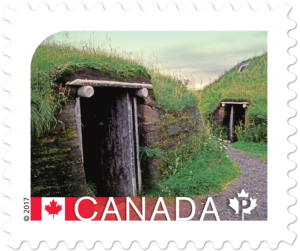[press release]
ROYAL MAIL TO HONOUR DAVID BOWIE WITH A SET OF 10 SPECIAL STAMPS 
- Royal Mail will issue a set of 10 Special Stamps as a tribute to one of the most influential music and cultural figures of all time
- This is the first time Royal Mail has dedicated an entire stamp issue to an individual music artist or cultural figure.
- Six stamps will feature images of the album covers: Hunky Dory; Aladdin Sane; “Heroes”; Let’s Dance; Earthling and ★ (Black Star).
- Completing the set, four additional stamps will show Bowie performing live on tours across four decades: The Ziggy Stardust Tour, 1972; The Stage Tour, 1978;The Serious Moonlight Tour, 1983; and A Reality Tour, 2004.
- Fans can pre-order the stamps from today by visiting www.royalmail.com/davidbowie
- The stamps will be on sale from 14 March 2017 at www.royalmail.com/davidbowie and from 7,000 Post Office branches across the UK and by calling 03457 641 641
Royal Mail today [January 25, 2017] revealed it will issue a set of 10 Special Stamps to honour David Bowie – one of the most influential music and cultural figures of all time.
This is the first time Royal Mail has dedicated an entire stamp issue to an individual music artist or cultural figure.
The stamps are issued in the year of what would have been his 70th birthday, and 50 years since his first album release.
Endlessly innovative and pioneering, he is widely regarded as having elevated his music to an art form.
Six of the stamps showcase Bowie’s changing musical styles and personas across the decades and feature images of some of his most admired and defining album covers: Hunky Dory; Aladdin Sane; “Heroes”; Let’s Dance; Earthling and ★. The arc of the vinyl album protrudes from the right hand side of each stamp.
Completing the set, four stamps show Bowie in action performing live on tours across four decades; The Ziggy Stardust Tour, 1972; The Stage Tour, 1978; The Serious Moonlight Tour, 1983; and A Reality Tour, 2004.
The stamps and a range of limited edition souvenirs are available to pre-order from today at www.royalmail.com/davidbowie and will be on sale from 14 March 2017.
Bowie’s 1972 album cover for The Rise and Fall of Ziggy Stardust and the Spiders From Mars was featured in the Classic Album Covers stamp set issued in January 2010.
The only other music artists to have been honoured with a dedicated stamp issue are groups; The Beatles (2010) and Pink Floyd (2015).
A year-long poll undertaken by New Musical Express magazine in 2000 canvassed opinion from musicians worldwide as to the most influential artist. The result of this poll placed Bowie at Number One.
Album cover stamps
 Hunky Dory, Bowie’s fourth album and released in December 1971. Time magazine chose it as part of their “100 best albums of all time” list in January 2010.
Hunky Dory, Bowie’s fourth album and released in December 1971. Time magazine chose it as part of their “100 best albums of all time” list in January 2010.
 Aladdin Sane, his sixth album and released in April 1973. The album features the iconic photograph by Brian Duffy.
Aladdin Sane, his sixth album and released in April 1973. The album features the iconic photograph by Brian Duffy.
 Heroes, his twelfth studio album and released in October 1977. This was the second instalment of his “Berlin Trilogy” recorded with Brian Eno and Tony Visconti. The title track remains one of Bowie’s best known and acclaimed songs.
Heroes, his twelfth studio album and released in October 1977. This was the second instalment of his “Berlin Trilogy” recorded with Brian Eno and Tony Visconti. The title track remains one of Bowie’s best known and acclaimed songs.
 Let’s Dance, his fifteenth studio album and released in April 1983. Co-produced by Nile Rodgers, and featuring three of his most successful singles Let’s Dance, Modern Love and China Girl. Let’s Dance is Bowie’s best-selling album.
Let’s Dance, his fifteenth studio album and released in April 1983. Co-produced by Nile Rodgers, and featuring three of his most successful singles Let’s Dance, Modern Love and China Girl. Let’s Dance is Bowie’s best-selling album.
 Earthling, his twentieth studio album and released in February 1997. The striking cover art features Bowie in an Alexander McQueen designed Union Flag coat.
Earthling, his twentieth studio album and released in February 1997. The striking cover art features Bowie in an Alexander McQueen designed Union Flag coat.
 Bowie’s 28th and final studio album, released on his 69th birthday – 8 January 2016 – and charting at No.1 in more than 20 countries. Bowie died two days after the release of ★, the album reaffirming his legacy as modern music’s most unrelenting innovator and topping critics’ ‘Best of 2016’ lists.
Bowie’s 28th and final studio album, released on his 69th birthday – 8 January 2016 – and charting at No.1 in more than 20 countries. Bowie died two days after the release of ★, the album reaffirming his legacy as modern music’s most unrelenting innovator and topping critics’ ‘Best of 2016’ lists.
Live stamps
 The Ziggy Stardust Tour, 1972. The tour promoted The Rise and Fall of Ziggy Stardust and the Spiders from Mars studio album and took in the UK, North America, and Japan.
The Ziggy Stardust Tour, 1972. The tour promoted The Rise and Fall of Ziggy Stardust and the Spiders from Mars studio album and took in the UK, North America, and Japan.
 The Serious Moonlight Tour, 1983. The tour was designed to support the Let’s Dancealbum and was Bowie’s longest, largest and most successful concert tour.
The Serious Moonlight Tour, 1983. The tour was designed to support the Let’s Dancealbum and was Bowie’s longest, largest and most successful concert tour.
 The Stage Tour, 1978. Also known as Isolar II – The 1978 World Tour and The Low / “Heroes” World Tour because it was staged to promote the Low and “Heroes” albums
The Stage Tour, 1978. Also known as Isolar II – The 1978 World Tour and The Low / “Heroes” World Tour because it was staged to promote the Low and “Heroes” albums
 A Reality Tour, 2004. Staged to promote the Reality album this tour was to be Bowie’s last tour.
A Reality Tour, 2004. Staged to promote the Reality album this tour was to be Bowie’s last tour.
Philip Parker, Royal Mail stamp Strategy manager, said: “For five decades David Bowie was at the forefront of contemporary culture, and has influenced successive generations of musicians, artists, designers and writers. Royal Mail’s stamp issue celebrates this unique figure and some of his many celebrated personas.”
The stamps are available from 14 March 2017, at 7,000 Post Office branches across the UK and www.royalmail.com/davidbowie
 scholars.
scholars.
 The National Military Organization in Eretz Israel (Etsel) broke away from the Haganah paramilitary organization in the spring of 1931. In the years before the establishment of the State of Israel in 1948, the organization operated clandestinely against Arab rioters during the revolt of 1936-1939 and took part in “Nonetheless” operations together with the Revisionist, Betar and HaTzohar groups to rescue European Jews before and during WWII. Members in Poland fought against the German enemy in the ghettos and took part in the Warsaw Ghetto uprising in 1943 as part of the Jewish Military Union, led by Pawel Frankel. Members in Eretz Israel were recruited to fight against Germany as volunteers in the British military. Etsel commander David Raziel was killed in the line of duty in Iraq on May 20, 1941. In February 1944 the Etsel, led by Menachem Begin, waged a campaign against the British authorities and government policy in Eretz Israel. Members were suppressed from within by the Haganah, but obeyed their leader’s decree never to take up arms against their brethren. Together with the Haganah-Palmach and Lehi, Etsel fighters, and especially those sentenced to death by hanging by the British Mandate courts, contributed to the establishment of the State of Israel. On July 13, 1980, the anniversary of the death of Etsel military leader Ze’ev Jabotinsky, Prime Minister Menachem Begin spoke at Mount Herzl in Jerusalem of those who fought both overtly and clandestinely: “Ö with their blood they sprouted the tree of freedom for their People, with their bodies they paved the way to the mountaintop”.
The National Military Organization in Eretz Israel (Etsel) broke away from the Haganah paramilitary organization in the spring of 1931. In the years before the establishment of the State of Israel in 1948, the organization operated clandestinely against Arab rioters during the revolt of 1936-1939 and took part in “Nonetheless” operations together with the Revisionist, Betar and HaTzohar groups to rescue European Jews before and during WWII. Members in Poland fought against the German enemy in the ghettos and took part in the Warsaw Ghetto uprising in 1943 as part of the Jewish Military Union, led by Pawel Frankel. Members in Eretz Israel were recruited to fight against Germany as volunteers in the British military. Etsel commander David Raziel was killed in the line of duty in Iraq on May 20, 1941. In February 1944 the Etsel, led by Menachem Begin, waged a campaign against the British authorities and government policy in Eretz Israel. Members were suppressed from within by the Haganah, but obeyed their leader’s decree never to take up arms against their brethren. Together with the Haganah-Palmach and Lehi, Etsel fighters, and especially those sentenced to death by hanging by the British Mandate courts, contributed to the establishment of the State of Israel. On July 13, 1980, the anniversary of the death of Etsel military leader Ze’ev Jabotinsky, Prime Minister Menachem Begin spoke at Mount Herzl in Jerusalem of those who fought both overtly and clandestinely: “Ö with their blood they sprouted the tree of freedom for their People, with their bodies they paved the way to the mountaintop”.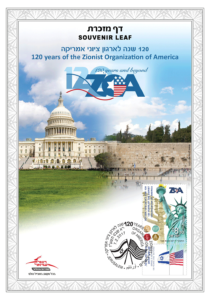 The ZOA, founded in 1897, is the oldest and one of the largest pro-Israel organizations in the United States. Its roster of distinguished presidents includes U.S. Supreme Court Justice Louis Brandeis, Rabbi Abba Hillel Silver who led the fight in America to reestablish the Jewish State, and currently, Morton A. Klein who was named one of the top five influential Jewish leaders by the Forward newspaper.
The ZOA, founded in 1897, is the oldest and one of the largest pro-Israel organizations in the United States. Its roster of distinguished presidents includes U.S. Supreme Court Justice Louis Brandeis, Rabbi Abba Hillel Silver who led the fight in America to reestablish the Jewish State, and currently, Morton A. Klein who was named one of the top five influential Jewish leaders by the Forward newspaper.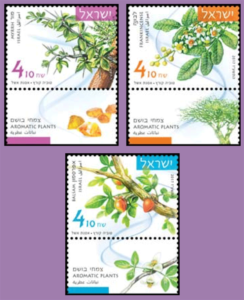
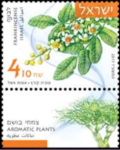 A genus (Boswellia) of the Burseraceae family that includes a number of tree and bush species from which the resin used for the incense called frankincense is derived. The resin is collected in containers after puncturing the bark of the young tree trunk.
A genus (Boswellia) of the Burseraceae family that includes a number of tree and bush species from which the resin used for the incense called frankincense is derived. The resin is collected in containers after puncturing the bark of the young tree trunk.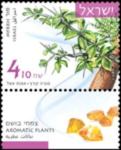 A genus (Commiphora) that also belongs to the Burseraceae family which includes species of bushes from which the resin used for the incense called myrrh is derived by slicing the bark of young branches. The species most commonly used is Commiphora mirrha.
A genus (Commiphora) that also belongs to the Burseraceae family which includes species of bushes from which the resin used for the incense called myrrh is derived by slicing the bark of young branches. The species most commonly used is Commiphora mirrha.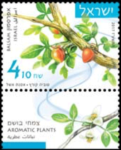 The balsam plant is mentioned in ancient writings and is consistent with the biblical Tzori plant which served as the source for producing high quality perfume. After some deliberation regarding the identification of the plant, there is now widespread agreement among researchers identifying it as one of the myrrh species of the Burseraceae family, Commiphora gileadensis, which still grows in the southern Arabian Peninsula. This plant was introduced to Israel and acclimatized in recent years and is now cultivated in the Ein Gedi and northern Dead Sea area.
The balsam plant is mentioned in ancient writings and is consistent with the biblical Tzori plant which served as the source for producing high quality perfume. After some deliberation regarding the identification of the plant, there is now widespread agreement among researchers identifying it as one of the myrrh species of the Burseraceae family, Commiphora gileadensis, which still grows in the southern Arabian Peninsula. This plant was introduced to Israel and acclimatized in recent years and is now cultivated in the Ein Gedi and northern Dead Sea area.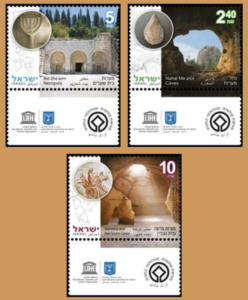 In 1972, the United Nations Educational, Scientific and Cultural Organization (UNESCO) approved an agreement to protect world heritage sites. The program included rules to assess natural and cultural sites and determine their significance to mankind’s common cultural heritage. Every country prepares a list of its sites and once a year the UNESCO World Heritage Center conducts a special meeting to choose which of the nominated sites shall be included in the list of United Nations World Heritage Sites.
In 1972, the United Nations Educational, Scientific and Cultural Organization (UNESCO) approved an agreement to protect world heritage sites. The program included rules to assess natural and cultural sites and determine their significance to mankind’s common cultural heritage. Every country prepares a list of its sites and once a year the UNESCO World Heritage Center conducts a special meeting to choose which of the nominated sites shall be included in the list of United Nations World Heritage Sites.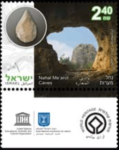 Four caves are carved into the mountain on the southern slope of Mount Carmel, at the entrance to the Nahal Me’arot Caves. Archeological excavations conducted at the site from 1928 to the present have discovered evidence of human existence near and inside the caves over hundreds of thousands of years. Among the many findings were remnants of houses, various stone tools, jewelry, bones of animals used for food and graves.
Four caves are carved into the mountain on the southern slope of Mount Carmel, at the entrance to the Nahal Me’arot Caves. Archeological excavations conducted at the site from 1928 to the present have discovered evidence of human existence near and inside the caves over hundreds of thousands of years. Among the many findings were remnants of houses, various stone tools, jewelry, bones of animals used for food and graves.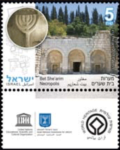 Rabbi Yehudah Hanasi, leader of the Jewish people in the late 2nd century CE, was buried at his behest in the cemetery in the town of Bet She’arim in the western Jezreel Valley. Many others subsequently asked to be buried near the final resting place of the admired leader. Dozens of burial caves were carved into the hillsides and on the outskirts of the town. Jews were brought from all over Eretz Israel and even from faraway lands to be buried there. The hundreds of epitaphs found in the caves provide information about the Jewish lifestyle in the 3rd and 4th centuries CE.
Rabbi Yehudah Hanasi, leader of the Jewish people in the late 2nd century CE, was buried at his behest in the cemetery in the town of Bet She’arim in the western Jezreel Valley. Many others subsequently asked to be buried near the final resting place of the admired leader. Dozens of burial caves were carved into the hillsides and on the outskirts of the town. Jews were brought from all over Eretz Israel and even from faraway lands to be buried there. The hundreds of epitaphs found in the caves provide information about the Jewish lifestyle in the 3rd and 4th centuries CE.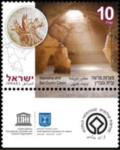 Residents of the city of Maresha, in the southern Judean plain, carved many spaces beneath their homes into the soft chalk bedrock upon which the city was built. These spaces served as water reservoirs, agricultural production facilities, storage rooms, pigeon raising, burial caves and more. After Maresha was destroyed in the 1st century BCE a new city called Bet-Guvrin was constructed nearby. In the Byzantine period, the townspeople carved bricks out of the chalk in deep, bell-shaped caves.
Residents of the city of Maresha, in the southern Judean plain, carved many spaces beneath their homes into the soft chalk bedrock upon which the city was built. These spaces served as water reservoirs, agricultural production facilities, storage rooms, pigeon raising, burial caves and more. After Maresha was destroyed in the 1st century BCE a new city called Bet-Guvrin was constructed nearby. In the Byzantine period, the townspeople carved bricks out of the chalk in deep, bell-shaped caves. Krav Maga is an Israeli martial art designed for self-defense, a method that allows anyone to defend him or herself against acts of violence. Krav Maga students learn how to protect themselves from arm and leg blows, strangulations, stabbing, bludgeoning and even how to deal with gun threats. Krav Maga is unique due to its simplicity and effectiveness in utilizing the attacker’s weak points. The technique was developed during the Yishuv period prior to the creation of the State of Israel, when the British Mandate government banned the bearing of arms following the 1936-39 Arab revolts. The Yishuv Council decreed that every Jewish boy and girl from the age of 13 and up must learn how to defend themselves in time of need. Krav Maga was also an inherent part of the training for members of the various underground defense organizations. The early Krav Maga was a combination of boxing and Japanese jujutsu. The jujutsu drills, however proved to be too difficult to master and therefore new, original drills, unique in their effectiveness and simplicity, were developed.
Krav Maga is an Israeli martial art designed for self-defense, a method that allows anyone to defend him or herself against acts of violence. Krav Maga students learn how to protect themselves from arm and leg blows, strangulations, stabbing, bludgeoning and even how to deal with gun threats. Krav Maga is unique due to its simplicity and effectiveness in utilizing the attacker’s weak points. The technique was developed during the Yishuv period prior to the creation of the State of Israel, when the British Mandate government banned the bearing of arms following the 1936-39 Arab revolts. The Yishuv Council decreed that every Jewish boy and girl from the age of 13 and up must learn how to defend themselves in time of need. Krav Maga was also an inherent part of the training for members of the various underground defense organizations. The early Krav Maga was a combination of boxing and Japanese jujutsu. The jujutsu drills, however proved to be too difficult to master and therefore new, original drills, unique in their effectiveness and simplicity, were developed.
 Hunky Dory, Bowie’s fourth album and released in December 1971. Time magazine chose it as part of their “100 best albums of all time” list in January 2010.
Hunky Dory, Bowie’s fourth album and released in December 1971. Time magazine chose it as part of their “100 best albums of all time” list in January 2010. Aladdin Sane, his sixth album and released in April 1973. The album features the iconic photograph by Brian Duffy.
Aladdin Sane, his sixth album and released in April 1973. The album features the iconic photograph by Brian Duffy. Heroes, his twelfth studio album and released in October 1977. This was the second instalment of his “Berlin Trilogy” recorded with Brian Eno and Tony Visconti. The title track remains one of Bowie’s best known and acclaimed songs.
Heroes, his twelfth studio album and released in October 1977. This was the second instalment of his “Berlin Trilogy” recorded with Brian Eno and Tony Visconti. The title track remains one of Bowie’s best known and acclaimed songs. Let’s Dance, his fifteenth studio album and released in April 1983. Co-produced by Nile Rodgers, and featuring three of his most successful singles Let’s Dance, Modern Love and China Girl. Let’s Dance is Bowie’s best-selling album.
Let’s Dance, his fifteenth studio album and released in April 1983. Co-produced by Nile Rodgers, and featuring three of his most successful singles Let’s Dance, Modern Love and China Girl. Let’s Dance is Bowie’s best-selling album. Earthling, his twentieth studio album and released in February 1997. The striking cover art features Bowie in an Alexander McQueen designed Union Flag coat.
Earthling, his twentieth studio album and released in February 1997. The striking cover art features Bowie in an Alexander McQueen designed Union Flag coat. Bowie’s 28th and final studio album, released on his 69th birthday – 8 January 2016 – and charting at No.1 in more than 20 countries. Bowie died two days after the release of ★, the album reaffirming his legacy as modern music’s most unrelenting innovator and topping critics’ ‘Best of 2016’ lists.
Bowie’s 28th and final studio album, released on his 69th birthday – 8 January 2016 – and charting at No.1 in more than 20 countries. Bowie died two days after the release of ★, the album reaffirming his legacy as modern music’s most unrelenting innovator and topping critics’ ‘Best of 2016’ lists. The Ziggy Stardust Tour, 1972. The tour promoted The Rise and Fall of Ziggy Stardust and the Spiders from Mars studio album and took in the UK, North America, and Japan.
The Ziggy Stardust Tour, 1972. The tour promoted The Rise and Fall of Ziggy Stardust and the Spiders from Mars studio album and took in the UK, North America, and Japan. The Serious Moonlight Tour, 1983. The tour was designed to support the Let’s Dancealbum and was Bowie’s longest, largest and most successful concert tour.
The Serious Moonlight Tour, 1983. The tour was designed to support the Let’s Dancealbum and was Bowie’s longest, largest and most successful concert tour. The Stage Tour, 1978. Also known as Isolar II – The 1978 World Tour and The Low / “Heroes” World Tour because it was staged to promote the Low and “Heroes” albums
The Stage Tour, 1978. Also known as Isolar II – The 1978 World Tour and The Low / “Heroes” World Tour because it was staged to promote the Low and “Heroes” albums A Reality Tour, 2004. Staged to promote the Reality album this tour was to be Bowie’s last tour.
A Reality Tour, 2004. Staged to promote the Reality album this tour was to be Bowie’s last tour. The American Philatelic Society reports its Show Manager, Megan Orient, will be leaving following AmeriStamp Stamp Expo (March 3-5, Reno, Nevada) “to be closer to her family.” We understand that that is in Pittsburgh.
The American Philatelic Society reports its Show Manager, Megan Orient, will be leaving following AmeriStamp Stamp Expo (March 3-5, Reno, Nevada) “to be closer to her family.” We understand that that is in Pittsburgh.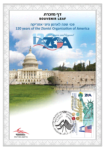 February
February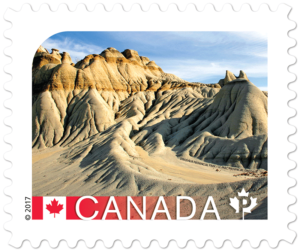 Dinosaur Provincial Park
Dinosaur Provincial Park Crafted by Lara Minja, of Lime Design, these definitive stamps showcase five places in Canada that have special status because of their importance to the common heritage of humanity. Mistaken Point (N.L.), the Historic District of Old Québec (Que.) and L’Anse aux Meadows National Historic Site (N.L.) make their debut in the series, while Dinosaur Provincial Park (Alta.) and Red Bay Basque Whaling Station (N.L.) enjoy an encore.
Crafted by Lara Minja, of Lime Design, these definitive stamps showcase five places in Canada that have special status because of their importance to the common heritage of humanity. Mistaken Point (N.L.), the Historic District of Old Québec (Que.) and L’Anse aux Meadows National Historic Site (N.L.) make their debut in the series, while Dinosaur Provincial Park (Alta.) and Red Bay Basque Whaling Station (N.L.) enjoy an encore.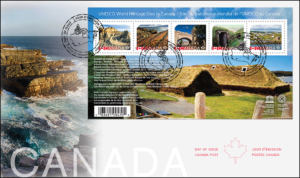 Cancelled in a fishing community near Mistaken Point – Canada’s latest UNESCO site – the Official First Day Cover boasts a souvenir sheet with some hidden features in celebration of Canada’s sesqui- centennial. Use black light to explore our tribute to these captivating sites and you’ll find the official Canada 150 logo and text waiting to be discovered.
Cancelled in a fishing community near Mistaken Point – Canada’s latest UNESCO site – the Official First Day Cover boasts a souvenir sheet with some hidden features in celebration of Canada’s sesqui- centennial. Use black light to explore our tribute to these captivating sites and you’ll find the official Canada 150 logo and text waiting to be discovered. 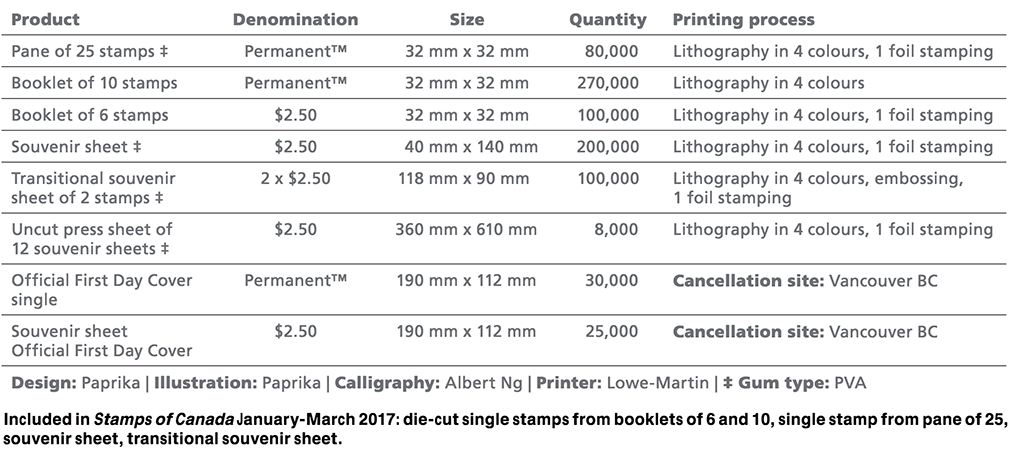 [January 16th press release]
[January 16th press release]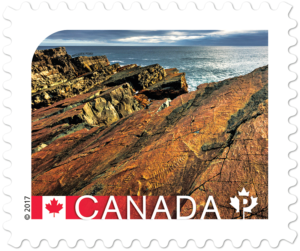 CO World Heritage Sites.
CO World Heritage Sites. e than four centuries. Fortified with walls, gates and bastions, this is the only colonial city north of Mexico to have preserved its ramparts.
e than four centuries. Fortified with walls, gates and bastions, this is the only colonial city north of Mexico to have preserved its ramparts.